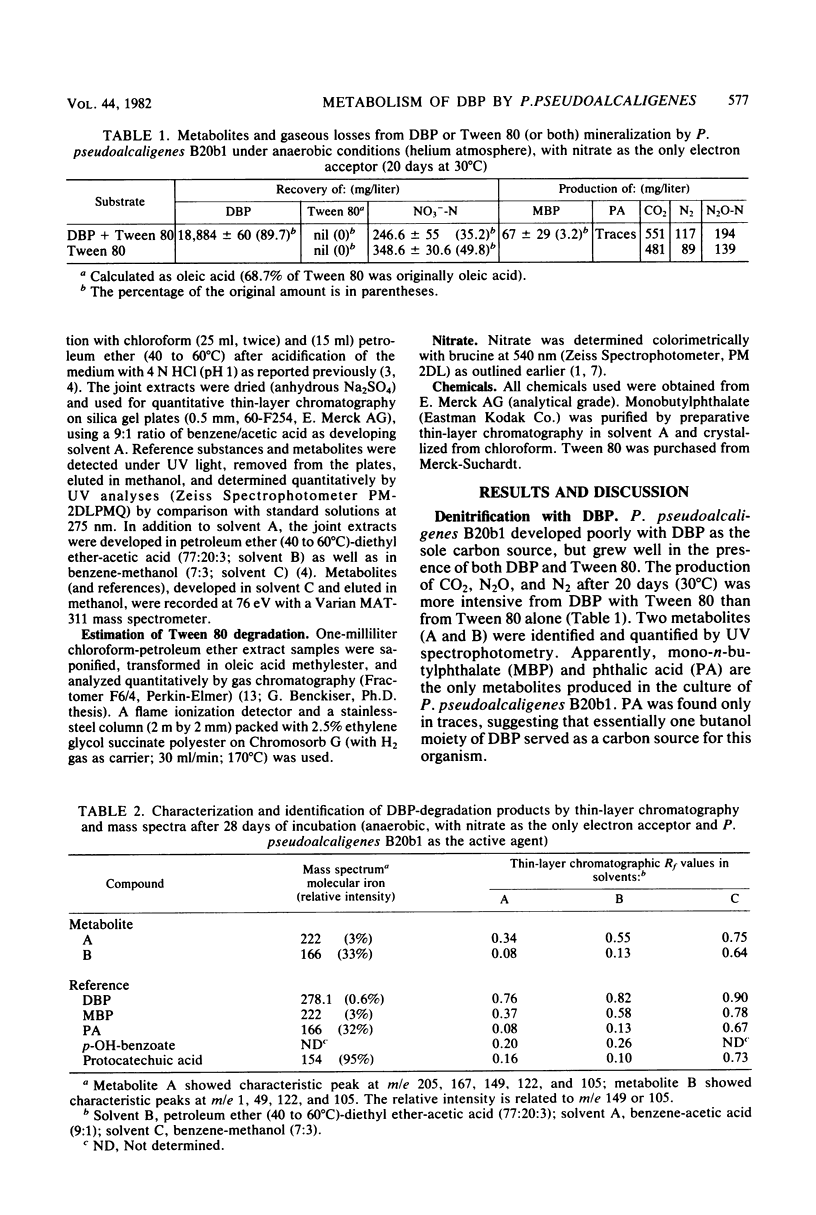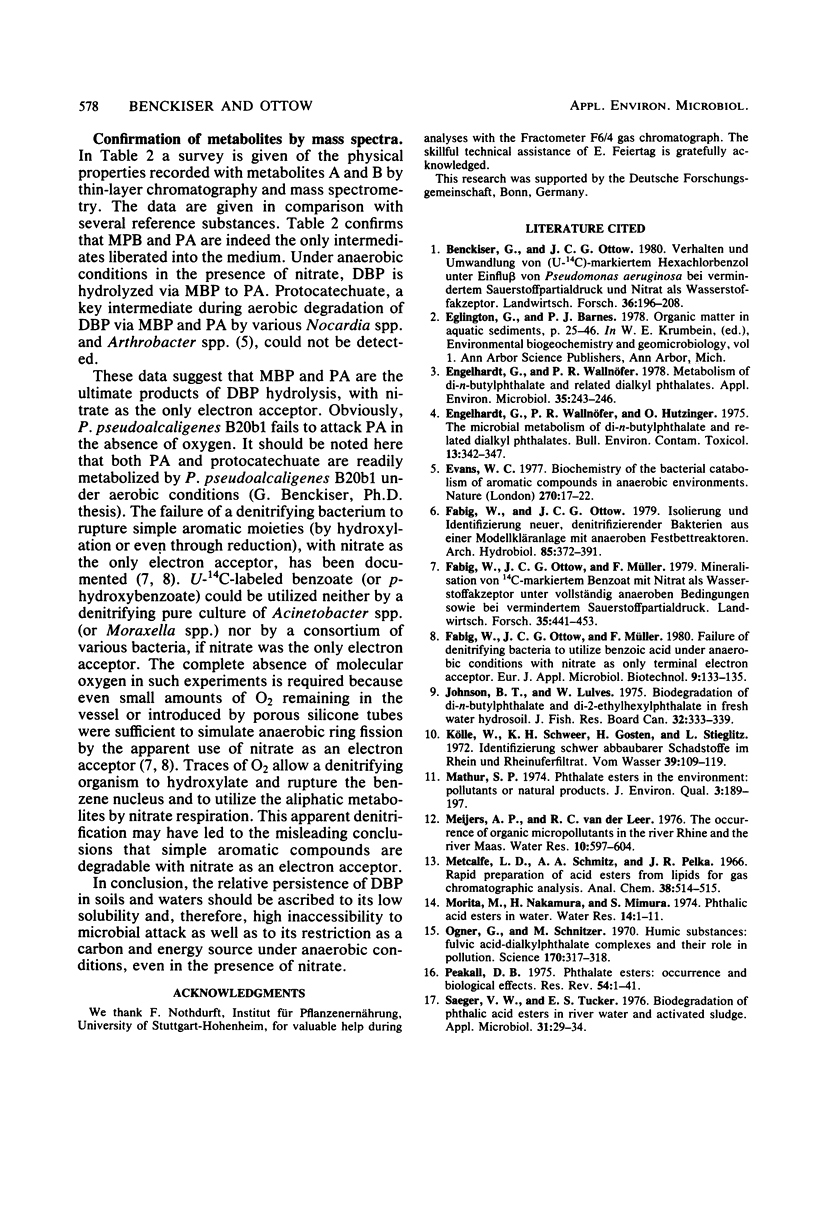Abstract
The metabolism of di-n-butylphthalate by a denitrifying strain of Pseudomonas pseudoalcaligenes B20b1 was studied under anaerobic conditions, with nitrate as the only electron acceptor. Thin-layer chromatography and mass spectral analysis of culture extracts (20 days at 30°C) showed mono-n-butylphthalate and phthalic acid as the only products, suggesting that one butanol moiety served essentially as the carbon source for growth and denitrification. N2 and N2O were detected by gas chromatography. In contrast to aerobic metabolism, phthalate was not degraded further if nitrate was the only electron acceptor.
Full text
PDF


Selected References
These references are in PubMed. This may not be the complete list of references from this article.
- Engelhardt G., Wallnöfer P. R. Metabolism of Di- and Mono-n-Butyl Phthalate by Soil Bacteria. Appl Environ Microbiol. 1978 Feb;35(2):243–246. doi: 10.1128/aem.35.2.243-246.1978. [DOI] [PMC free article] [PubMed] [Google Scholar]
- Englehardt G., Wallnöfer P. R., Hutzinger O. The microbial metabolism of di-n-butyl phthalate and related dialkyl phthalates. Bull Environ Contam Toxicol. 1975 Mar;13(3):342–347. doi: 10.1007/BF01685348. [DOI] [PubMed] [Google Scholar]
- Evans W. C. Biochemistry of the bacterial catabolism of aromatic compounds in anaerobic environments. Nature. 1977 Nov 3;270(5632):17–22. doi: 10.1038/270017a0. [DOI] [PubMed] [Google Scholar]
- Ogner G., Schnitzer M. Humic substances: fulvic acid-dialkyl phthalate complexes and their role in pollution. Science. 1970 Oct 16;170(3955):317–318. doi: 10.1126/science.170.3955.317. [DOI] [PubMed] [Google Scholar]
- Peakall D. B. Phthalate esters: Occurrence and biological effects. Residue Rev. 1975;54:1–41. doi: 10.1007/978-1-4612-9857-1_1. [DOI] [PubMed] [Google Scholar]
- Saeger V. W., Tucker E. S. Biodegradation of phthalic acid esters in river water and activated sludge. Appl Environ Microbiol. 1976 Jan;31(1):29–34. doi: 10.1128/aem.31.1.29-34.1976. [DOI] [PMC free article] [PubMed] [Google Scholar]


